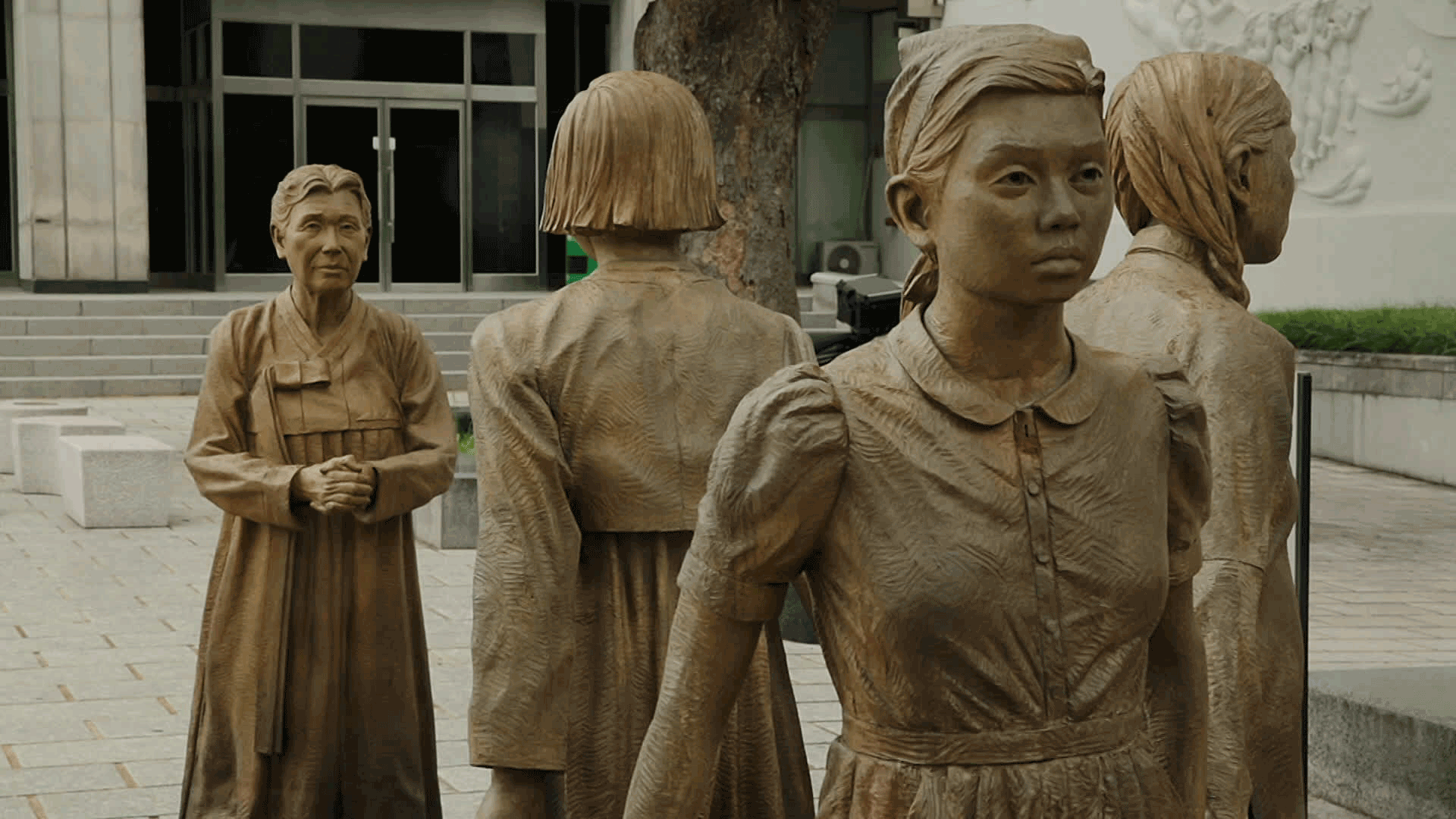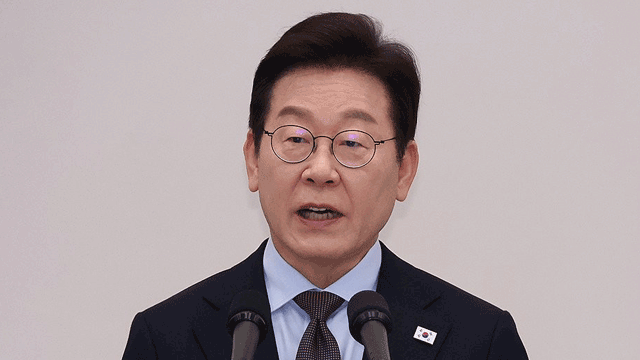[Anchor]
34 years ago, in 1991, the late Kim Hak-soon was the first to publicly testify about her expereience as a comfort women for the Japanese military.
To commemorate this day, the government designated August 14 as 'Memorial Day for Japanese Military Comfort Women' starting in 2017.
This year, the ceremony was held under the theme "Light Restored Through Courage and Solidarity, Illuminating Peace."
In fact, Kim Hak-soon's testimony had a significant impact on victims from other countries as well.
In the Philippines, there are comfort women victims who began to raise their voices after being inspired by Kim.
Reporter Choi Min-young has the story.
[Report]
In the Clark area of Luzon Island, Philippines.
Now a popular tourist destination, it was a major launch point for the 'Kamikaze' special attack units during World War II, 80 years ago.
And here, there was an 18-year-old Korean who was taken from a small village in Gyeongbuk at that time.
This is Clark in the Philippines, where grandmother Kim So-ran is presumed to have suffered as a comfort woman.
A U.S. military interrogation report states that 62 Koreans, including grandmother Kim So-ran, were brought to the Philippines.
She was deceived into coming here with her sister, believing that they would only need to wash bandages at a hospital.
[Yang Mi-gang/Former Chairperson of History NGO Forum: "It's not common for sisters to be victimized, so it was a painful part for me."]
Even after the war ended, the Philippines had to rely on Japan economically and militarily.
In this place, where it was difficult to testify about the comfort women victims, the first person to find the courage was grandmother Rosa Henson, known as the 'Kim Hak-soon of the Philippines.'
She was empowered by the testimonies of Korean comfort women victims in 1991.
[Yang Mi-gang/Former Chairperson of History NGO Forum: "(Grandmother Rosa Henson's) testimony led many Filipino comfort women victims to start testifying afterward."]
Grandmother Estelita also testified alongside her.
She participated in the Wednesday demonstrations in Korea with grandmother Lee Yong-soo and others, raising awareness of the victims' plight, and passed away last year at the age of ninety-four.
[Eleno/Granddaughter of Estelita Dy: "I don't know if this can ever be resolved. Moreover, most of the victims have passed away. It seems like there is no justice."]
Now, there are about six living comfort women victims each in the Philippines and Korea.
There is little time left to expect responsible action from the Japanese government.
This is KBS News, Choi Min-young.
34 years ago, in 1991, the late Kim Hak-soon was the first to publicly testify about her expereience as a comfort women for the Japanese military.
To commemorate this day, the government designated August 14 as 'Memorial Day for Japanese Military Comfort Women' starting in 2017.
This year, the ceremony was held under the theme "Light Restored Through Courage and Solidarity, Illuminating Peace."
In fact, Kim Hak-soon's testimony had a significant impact on victims from other countries as well.
In the Philippines, there are comfort women victims who began to raise their voices after being inspired by Kim.
Reporter Choi Min-young has the story.
[Report]
In the Clark area of Luzon Island, Philippines.
Now a popular tourist destination, it was a major launch point for the 'Kamikaze' special attack units during World War II, 80 years ago.
And here, there was an 18-year-old Korean who was taken from a small village in Gyeongbuk at that time.
This is Clark in the Philippines, where grandmother Kim So-ran is presumed to have suffered as a comfort woman.
A U.S. military interrogation report states that 62 Koreans, including grandmother Kim So-ran, were brought to the Philippines.
She was deceived into coming here with her sister, believing that they would only need to wash bandages at a hospital.
[Yang Mi-gang/Former Chairperson of History NGO Forum: "It's not common for sisters to be victimized, so it was a painful part for me."]
Even after the war ended, the Philippines had to rely on Japan economically and militarily.
In this place, where it was difficult to testify about the comfort women victims, the first person to find the courage was grandmother Rosa Henson, known as the 'Kim Hak-soon of the Philippines.'
She was empowered by the testimonies of Korean comfort women victims in 1991.
[Yang Mi-gang/Former Chairperson of History NGO Forum: "(Grandmother Rosa Henson's) testimony led many Filipino comfort women victims to start testifying afterward."]
Grandmother Estelita also testified alongside her.
She participated in the Wednesday demonstrations in Korea with grandmother Lee Yong-soo and others, raising awareness of the victims' plight, and passed away last year at the age of ninety-four.
[Eleno/Granddaughter of Estelita Dy: "I don't know if this can ever be resolved. Moreover, most of the victims have passed away. It seems like there is no justice."]
Now, there are about six living comfort women victims each in the Philippines and Korea.
There is little time left to expect responsible action from the Japanese government.
This is KBS News, Choi Min-young.
■ 제보하기
▷ 카카오톡 : 'KBS제보' 검색, 채널 추가
▷ 전화 : 02-781-1234, 4444
▷ 이메일 : kbs1234@kbs.co.kr
▷ 유튜브, 네이버, 카카오에서도 KBS뉴스를 구독해주세요!
- Comfort women in Philippines
-
- 입력 2025-08-15 01:56:13

[Anchor]
34 years ago, in 1991, the late Kim Hak-soon was the first to publicly testify about her expereience as a comfort women for the Japanese military.
To commemorate this day, the government designated August 14 as 'Memorial Day for Japanese Military Comfort Women' starting in 2017.
This year, the ceremony was held under the theme "Light Restored Through Courage and Solidarity, Illuminating Peace."
In fact, Kim Hak-soon's testimony had a significant impact on victims from other countries as well.
In the Philippines, there are comfort women victims who began to raise their voices after being inspired by Kim.
Reporter Choi Min-young has the story.
[Report]
In the Clark area of Luzon Island, Philippines.
Now a popular tourist destination, it was a major launch point for the 'Kamikaze' special attack units during World War II, 80 years ago.
And here, there was an 18-year-old Korean who was taken from a small village in Gyeongbuk at that time.
This is Clark in the Philippines, where grandmother Kim So-ran is presumed to have suffered as a comfort woman.
A U.S. military interrogation report states that 62 Koreans, including grandmother Kim So-ran, were brought to the Philippines.
She was deceived into coming here with her sister, believing that they would only need to wash bandages at a hospital.
[Yang Mi-gang/Former Chairperson of History NGO Forum: "It's not common for sisters to be victimized, so it was a painful part for me."]
Even after the war ended, the Philippines had to rely on Japan economically and militarily.
In this place, where it was difficult to testify about the comfort women victims, the first person to find the courage was grandmother Rosa Henson, known as the 'Kim Hak-soon of the Philippines.'
She was empowered by the testimonies of Korean comfort women victims in 1991.
[Yang Mi-gang/Former Chairperson of History NGO Forum: "(Grandmother Rosa Henson's) testimony led many Filipino comfort women victims to start testifying afterward."]
Grandmother Estelita also testified alongside her.
She participated in the Wednesday demonstrations in Korea with grandmother Lee Yong-soo and others, raising awareness of the victims' plight, and passed away last year at the age of ninety-four.
[Eleno/Granddaughter of Estelita Dy: "I don't know if this can ever be resolved. Moreover, most of the victims have passed away. It seems like there is no justice."]
Now, there are about six living comfort women victims each in the Philippines and Korea.
There is little time left to expect responsible action from the Japanese government.
This is KBS News, Choi Min-young.
34 years ago, in 1991, the late Kim Hak-soon was the first to publicly testify about her expereience as a comfort women for the Japanese military.
To commemorate this day, the government designated August 14 as 'Memorial Day for Japanese Military Comfort Women' starting in 2017.
This year, the ceremony was held under the theme "Light Restored Through Courage and Solidarity, Illuminating Peace."
In fact, Kim Hak-soon's testimony had a significant impact on victims from other countries as well.
In the Philippines, there are comfort women victims who began to raise their voices after being inspired by Kim.
Reporter Choi Min-young has the story.
[Report]
In the Clark area of Luzon Island, Philippines.
Now a popular tourist destination, it was a major launch point for the 'Kamikaze' special attack units during World War II, 80 years ago.
And here, there was an 18-year-old Korean who was taken from a small village in Gyeongbuk at that time.
This is Clark in the Philippines, where grandmother Kim So-ran is presumed to have suffered as a comfort woman.
A U.S. military interrogation report states that 62 Koreans, including grandmother Kim So-ran, were brought to the Philippines.
She was deceived into coming here with her sister, believing that they would only need to wash bandages at a hospital.
[Yang Mi-gang/Former Chairperson of History NGO Forum: "It's not common for sisters to be victimized, so it was a painful part for me."]
Even after the war ended, the Philippines had to rely on Japan economically and militarily.
In this place, where it was difficult to testify about the comfort women victims, the first person to find the courage was grandmother Rosa Henson, known as the 'Kim Hak-soon of the Philippines.'
She was empowered by the testimonies of Korean comfort women victims in 1991.
[Yang Mi-gang/Former Chairperson of History NGO Forum: "(Grandmother Rosa Henson's) testimony led many Filipino comfort women victims to start testifying afterward."]
Grandmother Estelita also testified alongside her.
She participated in the Wednesday demonstrations in Korea with grandmother Lee Yong-soo and others, raising awareness of the victims' plight, and passed away last year at the age of ninety-four.
[Eleno/Granddaughter of Estelita Dy: "I don't know if this can ever be resolved. Moreover, most of the victims have passed away. It seems like there is no justice."]
Now, there are about six living comfort women victims each in the Philippines and Korea.
There is little time left to expect responsible action from the Japanese government.
This is KBS News, Choi Min-young.
-
-

최민영 기자 mymy@kbs.co.kr
최민영 기자의 기사 모음
-
이 기사가 좋으셨다면
-
좋아요
0
-
응원해요
0
-
후속 원해요
0















이 기사에 대한 의견을 남겨주세요.